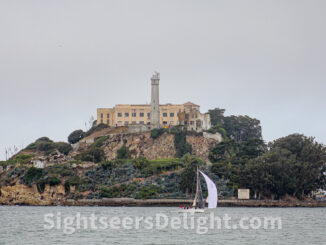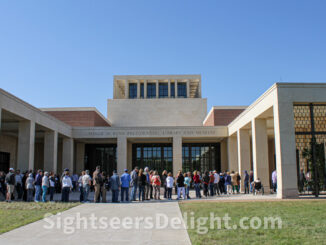DALLAS — Of the 13 presidential libraries administered by the National Archives and Records Administration (NARA), chances are no one agrees with every statement or decision made by all 13 presidents.
But, tourists would be remiss to skip the opportunity to visit the library of a president with whom they disagree.
“It’s living history,” said John Orrell, public affairs and marketing director for the George W. Bush Presidential Library and Museum in Dallas. “Preserving history is one of the most important things that we have to do as mankind. And, that is what we have done here.
“We have preserved eight years in American history,” Orrell said of the newest presidential library. “No matter what your thoughts are … when you come here, you will learn something you didn’t know. We’re not trying to change your mind; we’re trying to educate.”
The presidential library system traces its origins to 1939 when then-President Franklin D. Roosevelt donated his personal and presidential papers to the federal government. Previously, presidents distributed their papers after their tenure in office.
Congress in 1955 passed the Presidential Libraries Act. The libraries of presidents since Herbert Hoover are governed by NARA, though there are eight presidential libraries that operate outside the jurisdiction of NARA.
Over the years, presidents have opened their libraries amid great fanfare. The libraries serve as a way for presidents to preserve their legacy and offer their perspective on their tenure in the White House.
Today, the 13 presidential libraries combined hold more than 400 million pages, roughly 10 million photographs and 100,000 hours or tape recordings — all of which are important to researchers. In addition to the trove of documents, libraries hold one-of-a-kind artifacts that bring to life the important events that defined a presidency.
At the new Bush library, for example, there are “hanging chads” from the 2000 election, the gun Saddam Hussein carried when he was captured and a piece of twisted steel from the World Trade Center. At the LBJ Presidential Library, there is the desk Johnson used to sign the Voting Rights Act of 1965 into law.
Bush and Johnson are two presidents on opposite ends of the political spectrum. But, the two libraries are worth experiencing, nonetheless.
Whether one agrees with the outcome of history, there is no other place to see these artifacts. And, whether one agrees with a president, a visit to a presidential library affords the chance to reflect on history and think about the events in time that shaped the country.
There are only 44 people who have held the office of president. So, it behooves us to take the opportunity to study the terms of these presidents — no matter how much we may disagree with one.





